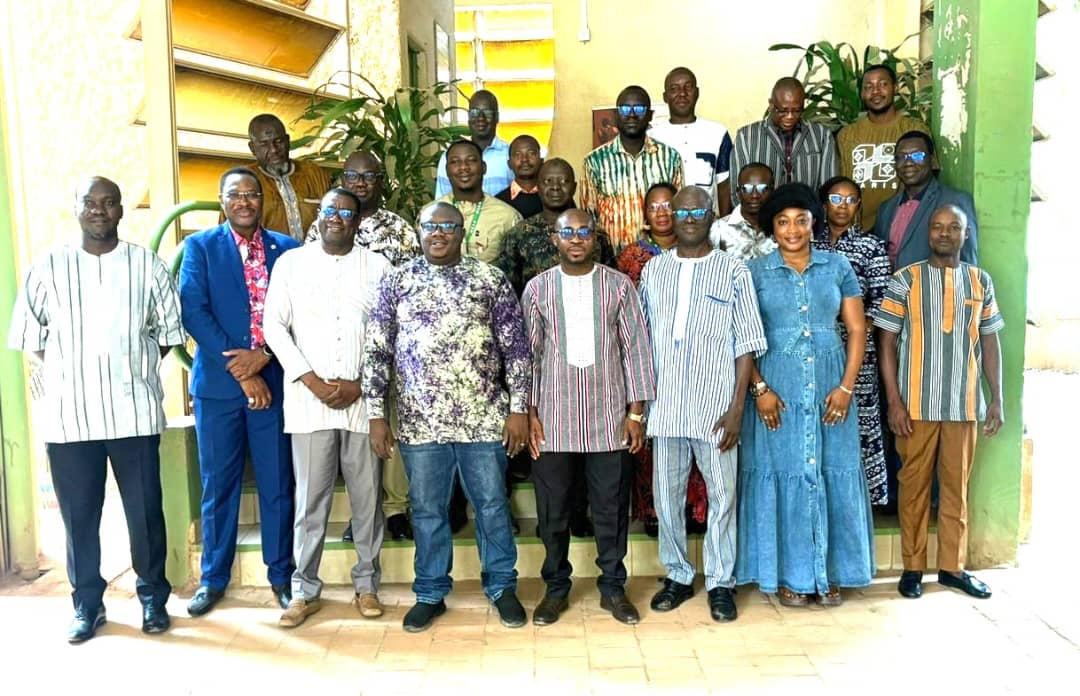THE FIE STRENGTHENS THE CAPACITIES OF ACTORS IN THE CENTRE-EAST, CENTRE-WEST AND CENTRE-SOUTH REGIONS

The Environmental Intervention Fund (FIE) is strengthening the capacities of agents responsible for drawing up reports (PV) of damage caused by certain wild animal species in three (3) regions, from September 30 to October 3, 2024 in Manga, in the Center-South region. These are the Center-East; Center-West and Center-South regions.
The opening ceremony was chaired by Lieutenant Colonel of Water and Forests, Aboudou OUEDRAOGO, Regional Director of the Environment for the Centre-South region. He thanked the FIE for this training which comes at the right time because it will strengthen the capacities of field actors responsible for preparing reports on damage caused by certain wild animal species.
Lieutenant Colonel Aboudou OUEDRAOGO urged the participants to follow the training assiduously. The ultimate goal being that the training contributes to reducing the damage caused by certain wild animal species and, by extension, to reducing the sums allocated to repairing animal damage.
The overall objective of the training is to strengthen the capacities and raise awareness among agents responsible for drawing up reports on damage caused by certain wild animal species in the regions most affected by the phenomenon.
In view of the frequency of conflicts between humans and certain wild animal species and the difficulties linked to the preparation of the relevant reports, the FIE has decided to train the agents responsible for recording damage caused by wild animals on the following topics: Decree No. 2016-111 /PRES/PM/MEEVCC/MATDSI of March 23, 2016 relating to the conditions and procedures for repairing damage and Joint Order No. 2020-910/PRES/PM/MEEVCC/MATDC relating to the composition, operation and conditions for the creation of local commissions for the assessment of damage caused by certain wild animal species.
The training will also cover knowledge of the techniques for preparing reports according to the standard FIE model and in accordance with the regulatory provisions of Decree No. 2016-111 /PRES/PM/MEEVCC/MATDSI of March 23, 2016 relating to the conditions and procedures for repairing damage and on the legal status and ethology of the wildlife species covered by the regulatory texts.
Specifically, the training aims to provide, among other things, knowledge to participants on: the legal status of these species of fauna concerned; the ethology of the fauna species concerned; areas of high concentrations of wild animal damage and the commonly used (theoretical and practical) repression techniques.

The training is provided by Tanga Frédéric YANOGO, Inspector of Water and Forests of the Directorate of Wildlife and Hunting Resources (DFRC). For AXIS 2, that of Manga, the participants are made up of three (3) agricultural agents and three (03) livestock agents from the regions concerned (Centre-sud, Centre-Est, Centre-Ouest) and eleven (11) forestry agents from the regions concerned,
With a view to popularizing good practices in all regions affected by damage from wild animals, capacity building for stakeholders, particularly producers and agents of decentralized services, is considered a solution for reducing the damage caused by certain wild animal species. These trained stakeholders will act as relays to others in their locality.
Thus, after the training of actors from four regions in Bobo-Dioulasso, it is the turn of those from three other regions also frequently affected by the damage caused by certain wild animal species, namely the Centre-South; the Centre-East and the Centre-West to be trained in Manga.
As a reminder, the Council of Ministers, in its session of March 9, 2016, in application of the provisions of the Forest Code, adopted Decree No. 2016-111 / PRES / PM / MEEVCC / MATDSI on the conditions and modalities for compensation for damage caused by certain wild animal species in Burkina Faso. This decree stipulates, in its Article 5: " the following damage caused by wild animals may be compensated : hyenas; lions; elephants; hippopotamuses; Nile crocodiles; gharial-snouted crocodiles; marsh crocodiles and buffaloes .”
DCRP/FIE
 English
English  Français
Français 




